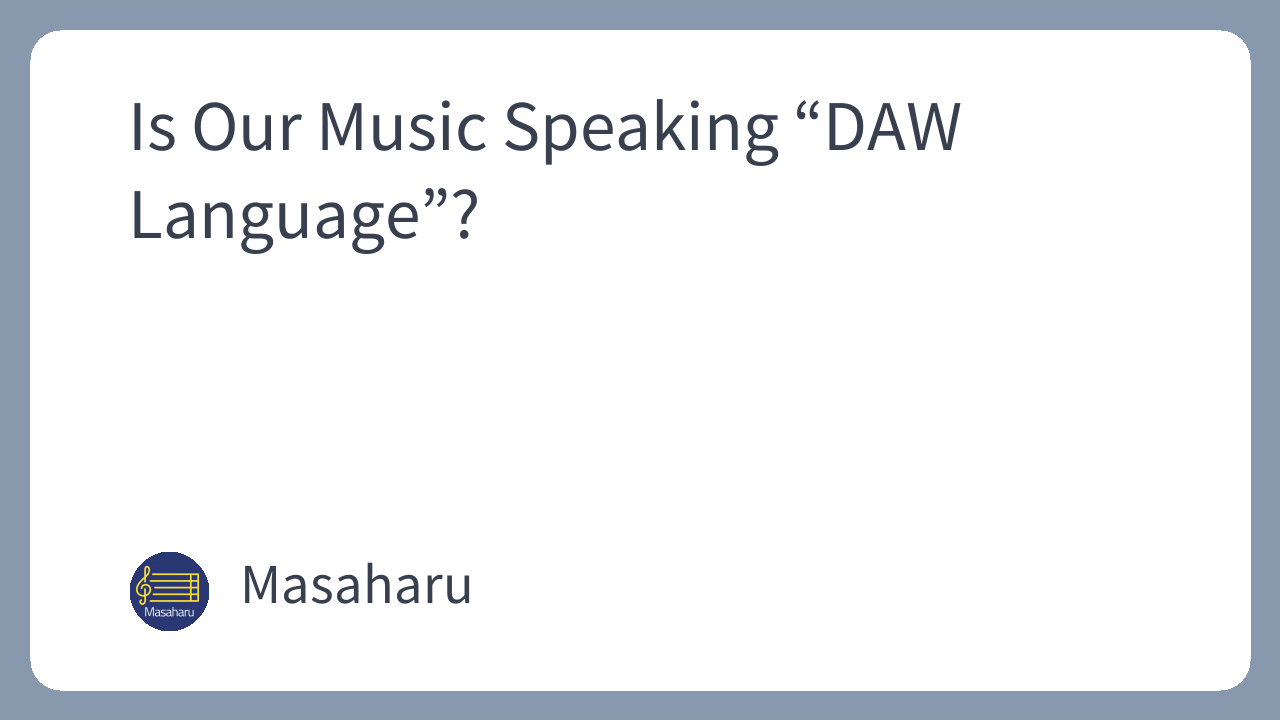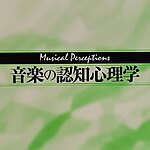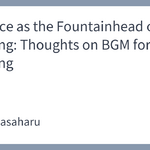- The Blind Spot of the DAW as a Production Environment
- The Grammar and Accent of “DAW Language”: Specifics of the Unseen Constraints
- The Illusion of the “Transparent Medium” and the Self-Censorship of the “Inner Voice”
- Liberation from “DAW Language,” or Utilizing the “Accent”: The Spirit of “Play” That Turns Constraints into a Game
- Towards a New Relationship with the DAW
The Blind Spot of the DAW as a Production Environment
The DAW (Digital Audio Workstation) has, almost imperceptibly, become an indispensable presence in our music production. To many creators, it may appear as a magic box promising vast freedom and infinite possibilities. However, I feel there is a “blind spot” in this common perception that is somehow being overlooked.
The DAW environment does not grant us absolute freedom. Rather, if we trace its evolutionary path from the dawn of sequencers to the present day, we can see it as the very embodiment of a “process of liberation from unfreedom”—a constant confrontation with limitations and an attempt to overcome them through daily progress.
And, in this relentless process of improvement, the DAW has cloaked itself in “subtle constraints” with their own unique tendencies, evolving and transforming into a production space that harbors, in a sense, unmusical characteristics.
If this is the case, then a communication language separate from music might exist within this DAW production space—something one might call a “DAW language.”
Here, “DAW language” is an analogy, comparing the
DAW’s unique system of editing operations to “words” and “grammar.” I suspect that this “DAW language” acts like a “linguistic accent,” unknowingly shaping our musical thinking and unconsciously influencing our music production.
Are we truly “mastering” the DAW? Or have we, without realizing it, fallen into a state of “being used” by the DAW?
This article will explore the question of whether it is possible for us, as producers, to become aware of the unconscious constraints imposed upon us by the DAW—a medium (a substance that influences thought and perception) that acts like an irresistible gravity—and, furthermore, to turn those constraints to our advantage and “play” with them.
The Grammar and Accent of “DAW Language”: Specifics of the Unseen Constraints
The grammar of the “DAW language” seems to have deeply permeated the very depths of our musical thinking. For example, the default settings we first see when opening a DAW—4/4 time, 120 BPM, and the grid divisions. It is as if the DAW is speaking to us, saying, “You must weave your music in this rhythm, in this time signature.”
This background of unerringly precise tempo and grid entails the loss of that organic musical time which flexibly expands and contracts with a live performer. Early sequencers enforced rigid timing, and the Quantize function was born from that very rigidity. As a result, unless we consciously introduce “fluctuations,” we end up confining our music within a homogenized time.
Another prominent feature of “DAW language” is the “strong incentive towards repetition” brought about by editing functions like cut-and-paste.
The copy-pasting of the same phrase (repetition) or the heavy use of loop materials, while reinforcing the conventions of certain musical genres (like minimal, techno, or hip-hop), may also be nipping in the bud “the many other kinds of music that might have been.” I feel this is an incredibly subtle constraint, hidden behind the “freedom” that the DAW provides.
Visual interfaces such as the Piano Roll, various MIDI editors, waveform editors, and the track window also appear to reinforce a mode of thinking that arranges sound “visually” and “mathematically,” which can, at times, dull our auditory intuition.
Numerous specific examples of these “unseen, subtle constraints” could be cited.
Furthermore, the uncritical and unintentional use of “AI functions” embedded in DAWs and plugins, lured by their convenience, could also potentially become a new “constraint” in the form of “DAW language.”
In our music production, might the grammar and accent of this DAW language be unknowingly guiding our music in a specific direction? It might be worth taking a moment to pause and reflect.
The Illusion of the “Transparent Medium” and the Self-Censorship of the “Inner Voice”
The evolution of the DAW fosters the illusion that it has given us “freedom.” The DAW is accepted as a self-evident entity that mediates between the creator and the music, bringing creative freedom. However, this very illusion—that “the DAW is a transparent medium”—may be the most subtle trap of all.
The more accustomed we become to operating a DAW, the more we may unconsciously self-censor our “inner voice”—those intuitive ideas that are far removed from the “DAW language,” ideas that don’t fit the grid or the temptation of repetition.
This manifests as a psychological trap, a form of self-deception, where we dismiss our own ideas as if the “DAW language” spoken by the DAW were the absolute standard: “This is too bothersome to do in a DAW,” or “This idea isn’t worth dedicating DAW resources to pursue.”
And being drawn in by the convenience of “AI functions” in DAWs and plugins, using them without thought, can become a similar psychological trap.
Thoughtlessly and uncritically accepting AI-driven edits or outputs, as if afflicted with hindsight bias (“Yes, this is what I wanted to do”), can lead to us stifling the sprouting of our own free ideas. This is a trap that will likely become even larger and harder to grasp with the future development of generative AI.
By laboring under the illusion that the DAW is a “transparent medium,” this suppression of the inner voice often goes unnoticed.
We might be caught in a deeply ironic dilemma: believing that assembling the perfect digital technology production environment is the path to rich musical creation, this assembly even becomes the goal itself. Consequently, by unconsciously obeying the “DAW language” emitted by the DAW medium, we become unable to hear our own inner voice.
Are there musical ideas sleeping within our hearts, abandoned in favor of the DAW’s convenience? And was that inner voice truly “unworthy of dedicating resources to”?
Liberation from “DAW Language,” or Utilizing the “Accent”: The Spirit of “Play” That Turns Constraints into a Game
So, are we “being used” by the DAW, or are we “using” it?
The first step to finding the answer to this question is nothing other than becoming aware of the existence of the “DAW language.” By deeply understanding its subtle constraints and turning them to our advantage, perhaps our creativity can evolve to an even richer depth.
Attempting to recover the “organic musical time” and “music that might have been” that were likely lost—for example, by “deviating from the DAW’s grid” or “intentionally introducing imperfection”—could prove to be an unexpectedly profound act.
Furthermore, by consciously recognizing the temptations of “DAW editing functions” like repetition, sometimes overcoming or deflecting them, and pursuing contingency and non-linearity, we may open up new horizons of expression.
To escape the trap of “inner voice” self-censorship, we may need the courage to deeply acknowledge the linguistic characteristics of the DAW and consciously break its accents and grammar. This requires a spirit of “play” (ludic engagement) that reclaims the initiative in our dialogue with the DAW, shifting from “being used” to “using.” It is an act of recapturing the “premonition or inkling of a musical idea.”
Consciously cultivating a “receptivity” within the perfectly ordered production environment of the DAW—an allowance for chance and unpredictable elements. And by not falling into the mental trap of treating the DAW environment as the “absolute center,” but by sometimes incorporating materials and experiences from outside that environment into the production process, we may gain new perspectives and inspiration.
The importance of these things—this “resonance” arising from multiple production perspectives—is, I believe, the key to generating our own unique accent.
By noticing the existence of the DAW as an invisible medium—a gravity—and by adjusting it or turning it to our advantage, I believe our music can “take flight” with more freedom than ever before.
Towards a New Relationship with the DAW
To become aware of the “DAW language” and to deeply understand its characteristics. This will surely be the key that invites us to richer creation. By consciously grasping the DAW not just as a mere tool, but engaging in dialogue with its linguistic properties, I believe the door to deeper, more individualistic musical expression will open.
In the first place, a tool is never just a neutral intermediary. The ideology of its creators and the mode of thinking dictated by its operation deeply influence the expression of the user.
This is a concept known as “the ideology of the tool.” As Heidegger discussed in “The Question Concerning Technology,” technology is more than just a means; it holds the power to “bring forth” (or reveal) the world in a particular way. Understanding this “ideology of the tool” is a crucial element when surveying one’s own music production.
To recognize the gravity of the DAW as a medium, and based on that, to re-examine the true meaning of mastering it. Surely, this inquiry will further break new ground for the possibilities of our music production.


